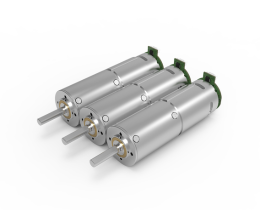Plastic Gears for Small Motors: Quiet, Light, and Built to Last
Ever wonder why some gadgets hum smoothly while others sound like a coffee grinder at 6 a.m.? The secret often lies in the gears. Specifically, plastic gears. Let’s talk about why these tiny components are quietly revolutionizing small motor systems—and why you might care.
.webp)
First off, let’s tackle the elephant in the room: Why plastic? Metal gears have been around forever, right? Sure. But picture this: A gear that doesn’t rust, doesn’t need constant lubrication, and won’t screech like a horror movie prop after six months. Plastic gears do exactly that. They’re like the low-maintenance friend who still shows up when you need them.
Take noise reduction. Plastic absorbs vibrations better than metal. Imagine a medical device that doesn’t sound like a chainsaw during a critical procedure. Or a smart home gadget that doesn’t interrupt your podcast with a metallic clank. That’s the kind of quiet reliability we’re talking about.
But wait—can plastic really handle heavy use?
Glad you asked. Modern engineering plastics like POM or nylon aren’t your grandma’s brittle polymer. They’re reinforced, heat-resistant, and designed to endure thousands of cycles. One customer ran a stress test on a gear for a drone motor—over 10,000 rotations, zero wear. Try that with cheap metal.
Now, let’s get nerdy for a second. Efficiency matters. Plastic gears are lighter, which means motors don’t waste energy dragging around unnecessary weight. Think of it like swapping a backpack full of bricks for one filled with foam. Your motor works smarter, not harder.
“But what about precision?”
Precision is non-negotiable. A poorly molded gear can throw off an entire system. That’s why KPOWER uses injection molding tech so precise, you’d think it’s powered by laser-guided robots. Tolerances tighter than a drumhead? Check. Consistent tooth profiles? Double-check.
Cost is another win. Plastic gears slash production expenses by up to 40% compared to metal. Less material waste, faster manufacturing—no wonder companies from robotics to automotive are making the switch.
Still not convinced? Let’s play a quick game of Would You Rather:
- Option A: A gear that needs oiling every month and eventually corrodes.
- Option B: A gear that installs once and forgets it exists.
Yeah, we’d pick B too.
Here’s the kicker: Sustainability. Plastic gears aren’t just durable; they’re recyclable. In a world scrambling to cut carbon footprints, that’s a big deal. Less waste, fewer replacements, happier planet.
So, next time you hear a whisper-quiet fan or a smoothly whirring toy car, remember—it’s probably got plastic gears doing the heavy lifting. And if you’re designing something that needs to work harder, quieter, and longer? Well, you know where to start.
Noise reduction. Efficiency. Durability. Sometimes the smallest parts make the biggest difference.


































.webp)

